I began my (fairly) long and (mostly) happy career in animation at the end of an era of traditional techniques; when I got into the business computers were just beginning to become common tools in animated films at Disney Studios. I worked on the last Disney cartoon painted traditionally, by hand, "Prince And The Pauper" (1990). I also worked on one of the last hand-painted American films made, "The Swan Princess" (1994). The painting of "cels," a short name for clear sheets of celluloid plastic, has since become something of a lost art.
Original cels from Disney animated films still command unbelievably high prices, upwards of $5,000 for a nice image from Snow White or Pinocchio. In the late 1980s cels from ANY production--even the cheapest TV efforts--were gold at auctions and galleries. Interestingly enough, in the early days, cels from some of the Disney projects were washed clean--so the cels could be re-used!
In time it became clear that the medium was unstable and didn't warrant spending too much money on anything but the most classic cartoons. One good heat wave and an expensive work of art could shrivel up like the plastic in that old 70's toy kit, "Shrinky Dinks!" Paint would eventually chip away or fade in color or damage and mis-use affected the overall value of a piece. If one intends to become a collector one also has to be wary of bootlegs and knock-offs--I've seen some remarkable copies of animation artwork, it can be difficult to spot a phony sometimes.
In the 90s Disney began offering "serio-cels." A whole staff worked full-time on the lot to reproducing beautiful works of art from the classic and current films (that weren't even made with cels) to be sold for top dollar to collectors. One artist even admitted to me she couldn't afford to buy one of the paintings she worked on with what they paid her for her work on the piece! The value of these works is determined mostly by the interest of buyers, of course; the top-draw works will always be original pieces, in good shape, from the films made during Walt Disney's lifetime.
I've always had an interest in cel animation, I love the tangible aspect of it, the fact that, at least with the earlier films, you were looking at an actual cel on a movie screen, the artwork itself was moving..."alive." Each cel represented 2 (or sometimes even one) frame of film and to own, or even SEE an actual cel from a movie was to see an actual "living" frame from the film itself.
I taught myself (poorly) how to make my own knock-offs of Disney cartoon frames, then spent some time learning the craft from artists who were employed full-time in this discipline at the first animation studio I worked at. I then learned the craft first hand when I made an animated film from scratch, a project that required some 5,000 or more individual drawings!
Recently I found a way to create my own cels and have had some small success (and huge satisfaction) creating and selling these unique, beguiling pictures to people who were interested in them.
If you'd like to learn how to create a piece of cel animation art or are just interested in how it's done, read on!


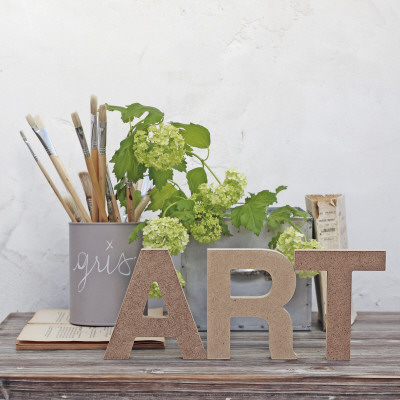
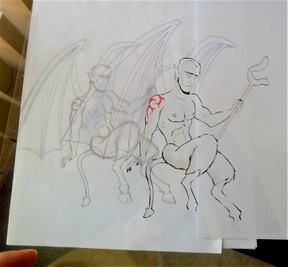 Another thing I do is "audition" my colors in Photoshop (or Gimp) to see if they're complementary. You could also do this with paints or crayons on a drawing. The idea is just to make sure you aren't painting "on the fly," once you've started glopping paint on your cel it's sometimes hard to get it off completely and mars the delicate surface of the plastic.
Another thing I do is "audition" my colors in Photoshop (or Gimp) to see if they're complementary. You could also do this with paints or crayons on a drawing. The idea is just to make sure you aren't painting "on the fly," once you've started glopping paint on your cel it's sometimes hard to get it off completely and mars the delicate surface of the plastic. 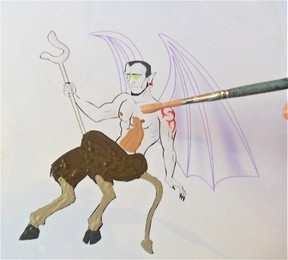
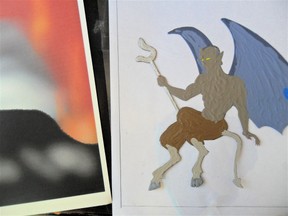
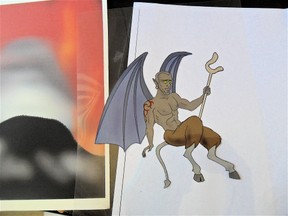 Chances are, despite your best efforts, when you examine your cel later it'll have sections where the paint has gone outside or inside the lines. If you were good and saved all the colors you mixed in little bottles (I didn't mention it because I never do it, I'm too lazy) you can go back and touch up places you missed. If you went outside the lines you can use an Exacto knife or other sharp point to scrape the paint back a little. I like to use the head of a mechanical pencil (without lead in it) and do it before the paint dries, you can kind of "push" the color into place.
Chances are, despite your best efforts, when you examine your cel later it'll have sections where the paint has gone outside or inside the lines. If you were good and saved all the colors you mixed in little bottles (I didn't mention it because I never do it, I'm too lazy) you can go back and touch up places you missed. If you went outside the lines you can use an Exacto knife or other sharp point to scrape the paint back a little. I like to use the head of a mechanical pencil (without lead in it) and do it before the paint dries, you can kind of "push" the color into place. 






 Tips To Help You Stay On A Fitness Routineon 07/25/2013
Tips To Help You Stay On A Fitness Routineon 07/25/2013
 Tips To Look Out For In A New Relationshipon 07/24/2013
Tips To Look Out For In A New Relationshipon 07/24/2013
 Four Stupid Movieson 07/24/2013
Four Stupid Movieson 07/24/2013
 Five Stupid Songson 07/21/2013
Five Stupid Songson 07/21/2013

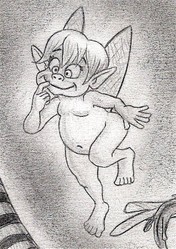
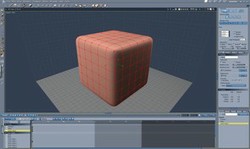
Comments
Sorry for the delayed response--I think the heat in regular printers will melt anything not specific to a printer, and the ink doesn't stay on (and there will be glare!) That's been my experience anyway, sorry!
I'm thinking about using clear book covers as animation cels for a animated short that I'm making. Can I scan the pictures with the cels with a regular printer scanner and not get glare?
I'm so glad you enjoyed it, thank you! I actually think animated films that are colored on computer end up looking better, to be honest (don't tell some of my friends, he heh), but I really miss this "lost" art and it's fun to create these things!
My daughter is fascinated with animation, she sketches for hours and is looking forward to learning more about the advanced technology you've outlined here. She will be thrilled to read this. Thanks
I can't imagine having to make thousands of these for one movie. But they come out so nice looking. I come from the "pick up a pen and draw" times myself so I love this idea of creating art. This page was very interesting to read, thanks for sharing.